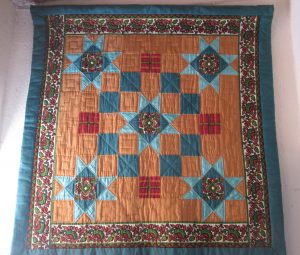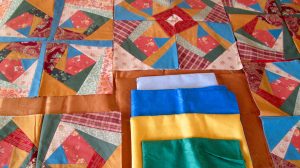We keep true friends forever. But things? Belongings, especially in American homes, have a tendency to pile up over time – as a result of countless holiday and birthday gifts and untold shopping sprees — and turn to clutter, which must, ultimately, be dealt with. As we get older, I think, it’s a good idea to lighten our lives and our loads, and let go of unwanted, unneeded things.
This process of unloading, or downsizing, has become particularly popular in recent years as elders’ consciousness has been raised to the need to spare others the job after we’re gone.
Late last year, in fact, a quirky little book on this subject became a surprise international best seller. Titled The Gentle Art of Swedish Death Cleaning, it’s about how to sort through and dispose of many of our possessions before we die, thus sparing our family members an unpleasant task.
Author Margareta Magnusson advises, “Don’t wait too long to begin.” She thinks sixty-five is an appropriate age to start slowly downsizing, giving things away to friends and family members and charities.
Of course, if you, like me and more and more other Americans who’ve decided to retire to Mexico (or another country), for economic, climatic, political, or other reasons, you’ve likely been forced to downsize out of sheer practicality. It’s simply not possible to take all your stuff with you. And who wants to? We’re starting a new chapter, in a new place, with a new lease on life. Why clutter it up?
Three years ago this month I wrote a WOW post titled “The Things I’m Packing,” which was a takeoff on the title of Tim O’Brien’s 1990 short story collection, The Things They Carried. “What it’s coming down to for me now,” I wrote in that post, “as I face the unknowns involved in packing to move to Mexico, is this: triage. Dividing my belongings … into three categories – those that remain in my Taos condo, which I hope to soon rent, those that I give away or throw away, and those that I’ll pack to take with me. I’m still in the process of deciding what I can finally let go of, and what I must carry.”
“This,” I continued, “is a process countless Americans in my age group are going through right now, and I’m sure we’re all finding it both difficult and liberating. We’re downsizing our lives and possessions to fit our new, post-retirement status. We’re closing big old doors and walking, by faith, toward smaller new ones, whether those new doors are in a new county or a new country….” [For the full post, please scroll down to the “Search the Archives” box on the lower right and type in the title.]
Now, three years later, I can give a final report. On my recent trip to Taos, last month, I dealt with my remaining belongings there using a similar triage method – this time, mostly: gifts to friends, donations to charity, or dumps in the nearest dumpster. Also, I’d brought an extra suitcase with me from Mexico, trusting that the things I’d feel worth keeping and bringing back with me would fit into that.
Among the things that did come back with me in that suitcase were these:



The crazy quilt I’ve now resumed work on has been a work in progress for a long time. It’s made of fabrics I’ve collected in every place in the world where I’ve lived. It’s a metaphor for who I am and what I’m made of: pieces of this and that, from here and there, in an odd kaleidoscopic design, all sewn together to form blocks that will one day — soon, I trust — make a completed whole.
The things worth keeping, I believe, are the things that speak most clearly to us and of us, the things that both ground us and buoy us, the things that quietly remind us at this stage of our lives, “You’ve had a right to be here.”
~ ~ ~
[For more on my economic development effort in Mali, please go to my website’s Home page and scroll down to How to Make an African Quilt: The Story of the Patchwork Project of Ségou, Mali (Nighthawk Press, 2013): www.bonnieleeblack.com. ]
